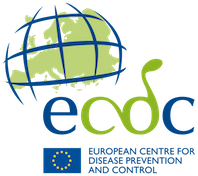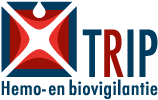 The European Centre for Disease Prevention and Control (ECDC) has published the sixth update of the Rapid Risk Assessment for 19-nCOV om March 12, 2020. The seventh , eighth and ninth update don’t have new updates forsubstances of human origin. Paragraph 5 of the sixth update shows guidelines for substances of human origin:
The European Centre for Disease Prevention and Control (ECDC) has published the sixth update of the Rapid Risk Assessment for 19-nCOV om March 12, 2020. The seventh , eighth and ninth update don’t have new updates forsubstances of human origin. Paragraph 5 of the sixth update shows guidelines for substances of human origin:
5 Substances of human origin safety
Threats and risks posed by COVID-19 to the safety and sustainability of substances of human origin (SoHO) supply as well as response measures stay the same as assessed in the fifth update of ECDC rapid risk assessment (paragraph 5). In the situation of increased spread of COVID-19 and extensive public health measures in the EU/EEA, SoHO authorities and establishments should focus and prioritise their efforts in managing the national SoHO supply. In this respect and in accordance with previously suggested principles [96], countries should:
- Ensure the inclusion of the SoHO national competent authorities (NCA) and/or establishment representatives in the national COVID-19 outbreak contingency planning body.
- Establish a mechanism for the SoHO NCAs and establishments to receive regular, up-to-date epidemiological information on the spread of COVID-19 in the country and abroad. Daily outbreak situation updates are available at the ECDC internet page for EU/EEA Members States and UK and for countries worldwide.
- Develop national/regional contingency plans for blood cells and tissues supply, which is reviewed constantly, regarding:
-
- Risk of transmission of COVID-19 by SoHO which remains theoretical but cannot be completely excluded. –
- Temporary loss of donors resulting in a reduced supply. Donors may be unable to donate because of having COVID-19, the isolation or self-isolation after contact with confirmed case of COVID-19, work commitments, restricted public transportation, the need to care for family members, or reluctance to donate due to fear of being infected. Organising blood drives may be discouraged as part of measures to prevent people gathering. COVID-19 specific donor selection criteria could also in some extent contribute to the decrease in collections. Despite possible measures taken to reduce the mobility of persons, blood donation and blood collection are essential activities for the national health services; blood donation should preferably be made by appointment.
- Temporary loss of staff due to COVID-19. It is anticipated that absenteeism during a COVID-19 outbreak will be higher than routine daily absenteeism, although the magnitude of absenteeism will depend on the on the local magnitude of an outbreak.
- Changes in the clinical demand for blood and blood products, cells and tissues, reduction in demand due to a probable reduction in elective healthcare and postponing non-essential cells and tissues therapies. Implementation of Patient blood management (PBM), thorough evaluation of the appropriateness of blood component requests and a reduction of elective (which can be postponed as non-essential) surgery/healthcare with medium-high consumption of blood components is strongly advisable.
- Work with national health authorities, hospitals and other responsible bodies to determine and monitor expected blood, plasma-derived medicinal products, cells and tissues usage during COVID-19 outbreak and to plan donation activities accordingly.
- Changes in the local and general epidemiological situation in the country.
- Support SoHO establishments in developing and implementing business continuity plans (BCP) related to COVID-19 outbreak. The BCP objectives may consider:
-
- Activate the BCP and set up a Business Continuity Management Team (BCMT) representative of the key functions and decision makers. Nominate a point of contact and a deputy with the Health Service and other agencies. This could be the Risk Manager.
- Implement measures to reduce transmission of the COVID-19 among employees, customers/clients, and partners.
- Minimise illness among employees.
- Maintain critical operations and services by: Reviewing stocks of critical supplies and increase supplies where possible, regularly check with contingency partners to ensure that they can fulfil their commitments and changing how staff are deployed, i.e. arrangements in offices/laboratories, cease non – essential meetings, minimise gatherings of staff, have meetings by teleconference even when in the same building, review catering arrangements and stagger staff dining, look at split shifts in the laboratories especially where there is no external contingency in place with no crossover to minimise the risk of passing on the virus, have as many of the critical staff work from home if that is possible, retrain staff to provide extra cover, bring back recently retired staff if necessary to fill essential roles, cease non-essential travel etc.
- Communicate regularly with staff so that they feel assured that the situation is being managed and that you will inform them as the situation changes. Staff should be clearly informed about procedures after a direct contact with staff who tested positive for COVID-19 as well as need for self-isolation and social distancing.
- Minimise social disruptions and the economic impact of the outbreak.
- Communication between SoHO establishments, NCA, national health authorities, ECDC and European Commission is essential to facilitate adequate and proportional response to COVID-19 outbreak at local, national and EU/EEA level. The alert platforms hosted by the European Commission for communication between Member States’ SoHO authorities, Rapid Alert Blood (RAB) and Rapid Alert Tissues and Cells (RATC) platforms may be used for the communication between NCAs, EU commission and ECDC in order to share data on implemented measures and difficulties in supply.
According to the previous ECDC risk assessment and in the absence of evidence of COVID-19 transmission through organ transplantation, precautionary measures should be applied to prevent possible transmission to recipients, organ procurement and patient treating personnel. Deceased donors who have died with COVID-19 are not eligible for organ donation. Living organ donors potentially exposed to risk of being infected due to travel to area or being in contact with COVID-19 case should be tested for the presence of the virus or deferred from donation for 14 days after exposure. After recovery form COVID-19 disease, living donors are eligible for donation if tested negative or 14 days after recovery. Additionally, organ transplantation authorities should develop measures for management of organ recipients with COVID-19, procedures when the transplant centre is temporarily closed, isolation of recipients if transplanted during a potential incubation period or in an area with sustained community transmission country in order to protect the patient, family and hospital personnel. It is also important to keep uninterrupted national and international transportation of organs and other cells and tissues intended for transplantation.
